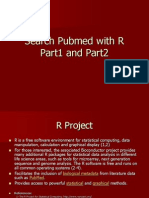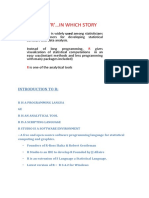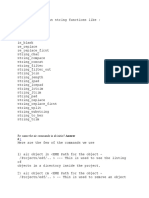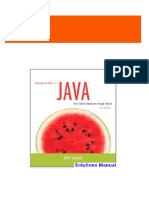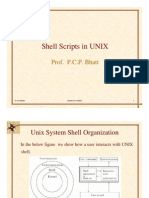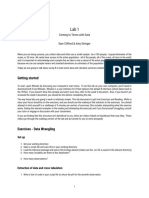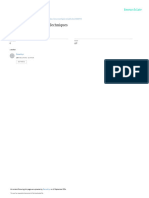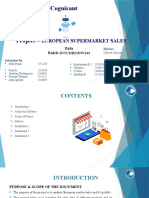Search Pubmed With R Part3
Search Pubmed With R Part3
Uploaded by
cpmarquiCopyright:
Available Formats
Search Pubmed With R Part3
Search Pubmed With R Part3
Uploaded by
cpmarquiCopyright
Available Formats
Share this document
Did you find this document useful?
Is this content inappropriate?
Copyright:
Available Formats
Search Pubmed With R Part3
Search Pubmed With R Part3
Uploaded by
cpmarquiCopyright:
Available Formats
Search
Search
Pubmed
Pubmed
with
with
R
R
Part3
Part3
Query
Query
pubmed
pubmed
titles for systemic lupus
titles for systemic lupus
erythematosus
erythematosus
with R Package RISmed
with R Package RISmed
1 1
#Type the following in the R console: #Type the following in the R console:
library(RISmed library(RISmed) )
lupus< lupus<- - EUtilsSummary('lupus[Ti EUtilsSummary('lupus[Ti] ] erythematosus[ti erythematosus[ti] ]
systemic[Ti systemic[Ti]', ]', retmax retmax=200) =200)
# # retmax retmax refer to Maximum number of records to retrieve, default is 100 refer to Maximum number of records to retrieve, default is 1000. 0.
fetch.lupus fetch.lupus < <- - EUtilsGet(lupus EUtilsGet(lupus) )
fetch.lupus fetch.lupus
# Results: # Results: PubMed PubMed query: query: lupus[Ti lupus[Ti] AND ] AND erythematosus[ti erythematosus[ti] AND ] AND systemic[Ti systemic[Ti] Records: 200 ] Records: 200
lupus.tit lupus.tit< <- -ArticleTitle(fetch.lupus ArticleTitle(fetch.lupus) )
lupus.tit lupus.tit [1:10] # to view the first 10 results of titles [1:10] # to view the first 10 results of titles
# export results to text file # export results to text file
write(lupus.tit,file write(lupus.tit,file=" ="lupusRISmedTi.txt lupusRISmedTi.txt") ")
References References
1 1- - RISmed RISmed package package: : Stephanie Stephanie Kovalchik Kovalchik (2013). (2013). RISmed RISmed: : Download Download content content from fromNCBI NCBI databases databases. R . R package package version version 2.1.0. 2.1.0.
http http:// ://CRAN.R CRAN.R- -project.org project.org/ /package package= =RISmed RISmed
Query
Query
pubmed
pubmed
titles for systemic
titles for systemic
lupus
lupus
erythematosus
erythematosus
using
using
RISmed
RISmed
View results of the exported text file
View results of the exported text file
Export results to text file with R command line Export results to text file with R command line
write(lupus.tit,file write(lupus.tit,file=" ="lupusRISmedTi.txt lupusRISmedTi.txt") ")
# export title results as text file and open file in excel or an # export title results as text file and open file in excel or any other valid text editor y other valid text editor
Find the Title Verb Relation with
Find the Title Verb Relation with
Reverb
Reverb
REVERB
1
is an open extractor executable jar executable jar program
developed by the University of Washington's Turing Center.
It is important to note that Reverb is dependent on J AVA, therefore it
is not a R program.
Reverb is powerful and provides useful information about structure
relation of a text. It is relative easy to use and runs very fast.
In our case we will apply Reverb to to our text title results.
Reference:
@inproceedings{ReVerb2011, author = {Anthony Fader and Stephen Soderland and Oren Etzioni},
title = {Identifying Relations for Open Information Extraction}, booktitle = {Proceedings of the Conference of Empirical Methods in Natural Language
Processing ({EMNLP} '11)}, year = {2011}, month = {J uly 27-31}, address = {Edinburgh, Scotland, UK} }
Install Reverb
Install Reverb
You can download the latest You can download the latest ReVerb ReVerb jar from jar from
http://reverb.cs.washington.edu/reverb http://reverb.cs.washington.edu/reverb- -latest.jar latest.jar
This is the executable jar file is easy to run from MS This is the executable jar file is easy to run from MS- -DOS command. DOS command.
In In https://github.com/knowitall/reverb/ https://github.com/knowitall/reverb/ you can find how to use you can find how to use
Reverb. It provides the following example which illustrates wha Reverb. It provides the following example which illustrates what it t it
does: does:
ReVerb ReVerb takes takes raw raw text text as as input input, , and and outputs outputs (argument1, (argument1, relation relation
phrase phrase, argument2) triples. , argument2) triples. For For example example, , given given the the sentence sentence
"Bananas are "Bananas are an an excellent excellent source source of of potassium potassium," ," ReVerb ReVerb will will extract extract
the the triple (bananas, be triple (bananas, be source source of of, , potassium potassium). ).
In In order order to to run run Reverb Reverb you you need need to to have have J ava J ava installed installed on on your your
computer computer. . You You can can install install J ava J ava from fromhttps://www.java.com/en/download/ https://www.java.com/en/download/
Reference:
@inproceedings{ReVerb2011, author = {Anthony Fader and Stephen Soderland and Oren Etzioni},
title = {Identifying Relations for Open Information Extraction}, booktitle = {Proceedings of the Conference of Empirical Methods in
Natural Language Processing ({EMNLP} '11)}, year = {2011}, month = {J uly 27-31}, address = {Edinburgh, Scotland, UK} }
Use of Reverb
Use of Reverb
Place
Place reverb-latest.jar file and the result file
lupusRISmedTi.txt
lupusRISmedTi.txt
under the same folder
under the same folder
Figure shows example of the 2 files in the same
folder (which we named Reverb-J ava)
Use of Reverb
Use of Reverb
1
1
-
-
Open the MS
Open the MS
-
-
DOS
DOS
cmd
cmd
and type the path of
and type the path of
the folder (Reverb
the folder (Reverb
-
-
J ava in our example)
J ava in our example)
containing both files:
containing both files: reverb-latest.jar file and
lupusRISmedTi.txt
lupusRISmedTi.txt
Use Reverb
Use Reverb
2 2- - Type the following cmd line to view results on the
console:
java -Xmx512m -jar reverb-latest.jar lupusRISmedTi.txt lupusRISmedTi.txt
Results are displayed on the MS Results are displayed on the MS- -DOS window DOS window
Use of Reverb
Use of Reverb
-
-
export the results to
export the results to
xls
xls
file
file
3 3- - Type the following cmd line to export results to a file : :
java -Xmx512m -jar reverb-latest.jar lupusRISmedTi.txt lupusRISmedTi.txt > >
ReverbLupusRISmedTi.txt ReverbLupusRISmedTi.txt
(the name given to the file was ReverbLupusRISmedTi.txt ReverbLupusRISmedTi.txt. You can use . You can use
other name or even export to a other name or even export to a xls xls file if you type file if you type
ReverbLupusRISmedTi.xls ReverbLupusRISmedTi.xls
Open the Reverb result file
Open the Reverb result file
ReverbLupusRISmedTi.txt
ReverbLupusRISmedTi.txt
with MS excel
with MS excel
Reverb output
Reverb output
The Reverb output has 18 columns
The Reverb output has 18 columns
(see results in the excel file)
(see results in the excel file)
The
The
most
most
interesting
interesting
are:
are:
Col 3 (Col C) : Argument1
Col 3 (Col C) : Argument1
Col 4 (Col D):
Col 4 (Col D):
Verb
Verb
Relation
Relation
phrase
phrase
Col 5 (Col E): Argument2
Col 5 (Col E): Argument2
(Col 12 (Col 12 refer refer to to the the confidence confidence that that this this extraction extraction is is correct correct and and col 2 col 2
refer refer to to the sentence number where the extraction came from)
Reverb Results
Reverb Results
Results of the first 5 rows (excel) from columns 3 Results of the first 5 rows (excel) from columns 3- -5 5
1 1- - childhood childhood- -onset systemic lupus onset systemic lupus erythematosus erythematosus is associated with is associated with ethnicity ethnicity
2 2- - renal involvement renal involvement are lower in are lower in ACE inhibitor ACE inhibitor- -treated patients treated patients
3 3- - Prednisone Prednisone induced induced two two- -way myocardial development way myocardial development
4 4- - Acetylated Acetylated histones histones contribute to contribute to the the immunostimulatory immunostimulatory potential of potential of
Neutrophil Neutrophil Extracellular Extracellular Traps Traps
5 5- -clinical practice clinical practice monitor the impact of monitor the impact of systemic lupus systemic lupus erythematosus erythematosus
Note: Note: Blue color refer to argument 1 Blue color refer to argument 1; white color is verb relation; ; white color is verb relation; orange color orange color
refer to argument 2 refer to argument 2
Prepare Reverb Results
Prepare Reverb Results
data for R
data for R
Wordcloud
Wordcloud
# use # use read.table read.table script (from reference script (from reference
1 1
) as follows: ) as follows:
d < d <- -
read.table('ReverbLupusRISmedTi.txt',quote read.table('ReverbLupusRISmedTi.txt',quote='', ='',comment comment
.char .char='', ='', allowEscapes allowEscapes= =F,sep F,sep=' ='\ \t', header=FALSE, t', header=FALSE,
as.is as.is=T, =T, stringsAsFactors stringsAsFactors=F) =F)
# transforms the data into a data frame # transforms the data into a data frame
e< e<- -as.data.frame(d as.data.frame(d) )
# merge columns (3 # merge columns (3- -5) into a single text sentence 5) into a single text sentence
f=paste(e$V3,e$V4,e$V5) f=paste(e$V3,e$V4,e$V5)
f[1:3] f[1:3] # view the first 3 lines # view the first 3 lines
[1] "childhood [1] "childhood- -onset systemic lupus onset systemic lupus erythematosus erythematosus is associated with ethnicity" is associated with ethnicity"
[2] "renal involvement are lower in ACE inhibitor [2] "renal involvement are lower in ACE inhibitor- -treated patients" treated patients"
[3] "Prednisone induced two [3] "Prednisone induced two- -way myocardial development" way myocardial development"
Reference: Reference:
1 Please stop using Excel 1 Please stop using Excel- -like formats to exchange data like formats to exchange data
December 7th, 2012J ohn Mount December 7th, 2012J ohn Mount
Represent Reverb Results
Represent Reverb Results
in R
in R
Wordcloud
Wordcloud
library (tm)
my.corpus my.corpus< <- -Corpus(VectorSource(f Corpus(VectorSource(f)) ))
summary(my.corpus)
inspect(my.corpus [1:3])
my.corpus <- tm_map(my.corpus, removeWords, stopwords("english"))
#my.corpus <- tm_map(my.corpus, stemDocument)
myTdm<- TermDocumentMatrix(my.corpus, control =
list(wordLengths=c(1,Inf)))
myTdm
# A term-document matrix (140 terms, 26 documents)
# Non-/sparse entries: 163/3477
# Sparsity : 96%
# Maximal term length: 22
# Weighting : term frequency (tf)
Represent Reverb Results
Represent Reverb Results
in R
in R
Wordcloud
Wordcloud
findFreqTerms(myTdm, lowfreq=2)
# [1] "associated" "damage" "distinct" "erythematosus"
# [5] "increased" "independently" "lupus" "systemic"
termFrequency <- rowSums(as.matrix(myTdm))
termFrequency <- subset(termFrequency, termFrequency>=10)
m <- as.matrix(myTdm)
wordFreq <- sort(rowSums(m), decreasing=TRUE) # This yields Word
Frequency
library (wordcloud)
#library (RColorBrewer)
set.seed(375)
pal1 <- brewer.pal(6,"Dark2")
wordcloud(words=names(wordFreq), freq=wordFreq,
scale=c(2,.9),min.freq=1, random.order=F, colors= pal1)
R Wordcloud
R Wordcloud
of Reverb Results
of Reverb Results
You might also like
- Sap S/4 Hana MM Course ContentDocument3 pagesSap S/4 Hana MM Course ContentNaveen Kumar70% (10)
- ITIL Foundation 200 Sample QuestionsDocument49 pagesITIL Foundation 200 Sample QuestionschuxingNo ratings yet
- Appendix RDocument11 pagesAppendix RRaphael CorbiNo ratings yet
- L1 Intro RDocument15 pagesL1 Intro Rpabluuss08No ratings yet
- Search Pubmed With R Part1Part2Document28 pagesSearch Pubmed With R Part1Part2cpmarquiNo ratings yet
- Os Lab 3Document15 pagesOs Lab 3sdra maanNo ratings yet
- Exercise 1.listing Files and Directories: Command Meaning Ls Ls - A Mkdir CD Directory CD CD CD .Document11 pagesExercise 1.listing Files and Directories: Command Meaning Ls Ls - A Mkdir CD Directory CD CD CD .uvs sahuNo ratings yet
- Input: 1.1. AssignmentDocument6 pagesInput: 1.1. AssignmentHalifatulKameliaNo ratings yet
- Lab 02 - Regular ExpressionDocument7 pagesLab 02 - Regular Expressionpotatoes.clownsNo ratings yet
- Os Lab Expt.sDocument26 pagesOs Lab Expt.srkumar25022000No ratings yet
- R TutorialDocument119 pagesR TutorialPrithwish GhoshNo ratings yet
- R Programming Paper SolutionsDocument43 pagesR Programming Paper Solutionsjayvaghela1542No ratings yet
- A Parser For HPSGDocument17 pagesA Parser For HPSGCristina TomaNo ratings yet
- Oprsys Lab#2Document13 pagesOprsys Lab#2problem solverNo ratings yet
- UNIX Cmds& ProgrammingDocument54 pagesUNIX Cmds& ProgrammingRanga PrasadNo ratings yet
- MCS 045Document13 pagesMCS 045kavithakiran0% (1)
- Operating System LabDocument33 pagesOperating System LabCasey MoralesNo ratings yet
- Linux&Tcl TrainingDocument13 pagesLinux&Tcl TrainingHòa Nguyễn Lê MinhNo ratings yet
- Linux Shell ScriptingDocument23 pagesLinux Shell ScriptingKrishna Kant Nema100% (1)
- CS505 Linux Practical FileDocument26 pagesCS505 Linux Practical Filesharmasweeta927No ratings yet
- UntitledDocument59 pagesUntitledSylvin GopayNo ratings yet
- Unix BibleDocument8 pagesUnix BiblehezzrrahNo ratings yet
- Unix Quick GuideDocument9 pagesUnix Quick Guidesam2976No ratings yet
- Introduction To RDocument3 pagesIntroduction To RDavid CrabtreeNo ratings yet
- Structure Calculations With XplorDocument7 pagesStructure Calculations With XplorShantanu S BhattacharyyaNo ratings yet
- Re: Name The Air Commands in Ab Initio? Answer #Document4 pagesRe: Name The Air Commands in Ab Initio? Answer #suri_NNo ratings yet
- CMSC 15100Document66 pagesCMSC 15100pie1213No ratings yet
- Economics & Genetics - Tutorial 1Document8 pagesEconomics & Genetics - Tutorial 1PobieraczNapisowNo ratings yet
- Advancrd Python Practical SEM II PDFDocument48 pagesAdvancrd Python Practical SEM II PDFomkar dhumalNo ratings yet
- UNIX FromDocument17 pagesUNIX FromDhanush BevaraNo ratings yet
- CCPR Computing Services: Workshop 1: Programming Basics, Unix, Remote Computing October 13, 2004Document38 pagesCCPR Computing Services: Workshop 1: Programming Basics, Unix, Remote Computing October 13, 2004saga54No ratings yet
- Datalog: Deductive Database Programming: Jay Mccarthy Jay@Racket-LangDocument13 pagesDatalog: Deductive Database Programming: Jay Mccarthy Jay@Racket-LangJuanjo GGzzNo ratings yet
- Unix Programs 2Document59 pagesUnix Programs 2Nagender Andugula100% (5)
- Affy Diffexp Clustering Exercise-1Document16 pagesAffy Diffexp Clustering Exercise-1emilioNo ratings yet
- Starting Out with Java From Control Structures through Objects 5th Edition Tony Gaddis Solutions Manual 2024 scribd download full chaptersDocument39 pagesStarting Out with Java From Control Structures through Objects 5th Edition Tony Gaddis Solutions Manual 2024 scribd download full chapterslentzgentzchNo ratings yet
- Lab01-LinuxUnix Utilities-Bash ProgrammingDocument4 pagesLab01-LinuxUnix Utilities-Bash ProgrammingExam SubmitNo ratings yet
- Unix Short 1Document29 pagesUnix Short 1subhrakantabaral04No ratings yet
- Day7 AlgorithmicsinR LectureDocument73 pagesDay7 AlgorithmicsinR LectureMazharulislamNo ratings yet
- Working With Affymetrix Data: Estrogen, A 2x2 Factorial Design ExampleDocument15 pagesWorking With Affymetrix Data: Estrogen, A 2x2 Factorial Design ExampleCharles WangNo ratings yet
- Orm ApiDocument29 pagesOrm ApiWitetahNo ratings yet
- Meet TCL TutorialDocument29 pagesMeet TCL TutorialJoren RefuerzoNo ratings yet
- Simple Tutorial in RDocument15 pagesSimple Tutorial in RklugshitterNo ratings yet
- Unix CommandsDocument36 pagesUnix CommandsmegarebelNo ratings yet
- Linux Record - TheoryDocument84 pagesLinux Record - TheorySatish Kumar J0% (1)
- Command Line: Change DirectoryDocument12 pagesCommand Line: Change Directoryapi-362845526No ratings yet
- Lecture 16Document22 pagesLecture 16Yom ERANo ratings yet
- 2 ProjectDocument9 pages2 Projectjanecoco0222No ratings yet
- Shell Scripting BasicsDocument105 pagesShell Scripting Basicsanon_720851577No ratings yet
- Basic Unix and Linux Commands With ExamplesDocument168 pagesBasic Unix and Linux Commands With ExamplesSundeep ByraganiNo ratings yet
- Bio Tools BookletDocument5 pagesBio Tools BookletTanvi GargNo ratings yet
- Coming To Terms With DataDocument7 pagesComing To Terms With Datamegameca007No ratings yet
- Differential Expression Analysis With Deseq2: Dr. Kathi ZarnackDocument8 pagesDifferential Expression Analysis With Deseq2: Dr. Kathi ZarnackGaurav SakhareNo ratings yet
- Exploratory Data Analysis and Graphics: Lab 2Document19 pagesExploratory Data Analysis and Graphics: Lab 2juntujuntuNo ratings yet
- Basic Unix Commands For DBADocument8 pagesBasic Unix Commands For DBAmujtabamaliNo ratings yet
- MATH 1280 - Written Assignment Unit 2Document8 pagesMATH 1280 - Written Assignment Unit 2Faith AghoghoNo ratings yet
- R Exercises For ModulesDocument41 pagesR Exercises For Moduleslegp16No ratings yet
- Me-I 2022 - ML LabDocument28 pagesMe-I 2022 - ML Labroshni mohan kumarNo ratings yet
- Shell Scripting: Theory Part-1Document8 pagesShell Scripting: Theory Part-1Sonu SachdevNo ratings yet
- Introduction To UNIX: Lecture Eight: 8.1 ObjectivesDocument9 pagesIntroduction To UNIX: Lecture Eight: 8.1 Objectivesmanishbhardwaj8131No ratings yet
- UNIX Shell Programming Interview Questions You'll Most Likely Be AskedFrom EverandUNIX Shell Programming Interview Questions You'll Most Likely Be AskedNo ratings yet
- The Universal Bibliographic Repertory: Traité de DocumentationDocument7 pagesThe Universal Bibliographic Repertory: Traité de DocumentationCristian Jesús Apaza MamaniNo ratings yet
- Ch10-Practical Database Design Methodology and Use of UML DiagramsDocument43 pagesCh10-Practical Database Design Methodology and Use of UML DiagramsThuong VuNo ratings yet
- MBA (IT) 3rd Sem - Presentation - TopicsDocument4 pagesMBA (IT) 3rd Sem - Presentation - TopicsJitesh ChaharNo ratings yet
- QlikView 11.2 Build 12904 SR12 Release NotesDocument42 pagesQlikView 11.2 Build 12904 SR12 Release NotesdanielrtdNo ratings yet
- Questions: (April 18)Document15 pagesQuestions: (April 18)Pranav JagtapNo ratings yet
- Big Data TechnologyDocument19 pagesBig Data TechnologyMartella PeronoNo ratings yet
- HCI - QB Unit4Document15 pagesHCI - QB Unit4Shruthi SNo ratings yet
- Data Archiving Sap Business WarehouseDocument66 pagesData Archiving Sap Business Warehousesmiks100% (1)
- Module 1 SudhaDocument129 pagesModule 1 SudhaRupith Kumar .NNo ratings yet
- Administering Microsoft SQL Server DatabasesDocument4 pagesAdministering Microsoft SQL Server DatabasesMuthu Raman ChinnaduraiNo ratings yet
- Oracle ADF Lab 1Document45 pagesOracle ADF Lab 1Amit Sharma100% (1)
- The Cloud - Streamlining Your Digital Life. 4Document11 pagesThe Cloud - Streamlining Your Digital Life. 4manognahk3No ratings yet
- SssssDocument3 pagesSssssnikko bajarla100% (2)
- Computer Organization: Lec #2: Introduction Bnar MustafaDocument19 pagesComputer Organization: Lec #2: Introduction Bnar Mustafazara qojo (زارا)No ratings yet
- Cold Start Problem in Recomandation SystemDocument15 pagesCold Start Problem in Recomandation Systema4aaforaNo ratings yet
- Normalization ExercisesDocument6 pagesNormalization ExercisesWava Jahn Vargas100% (1)
- LAIYE ConversationalAI SuiteDocument15 pagesLAIYE ConversationalAI Suitetauhid87No ratings yet
- MultimodalDataFusionTechniquesDocument11 pagesMultimodalDataFusionTechniquesezzadeanNo ratings yet
- CTS Final ProjectDocument27 pagesCTS Final Projectnithya AnandNo ratings yet
- Qlik Deployment Framework-QlikView Getting Started GuideDocument17 pagesQlik Deployment Framework-QlikView Getting Started GuideJacekNo ratings yet
- Audit Trail ReportingDocument43 pagesAudit Trail ReportingNagaraj Gunti100% (1)
- Lesson 1-3 INPUT DEVICESDocument3 pagesLesson 1-3 INPUT DEVICESLiviesh AndersonNo ratings yet
- Adressing Data SparsityDocument26 pagesAdressing Data Sparsityshreyati016No ratings yet
- The Ultimate Guide: To Data IntegrationDocument14 pagesThe Ultimate Guide: To Data IntegrationI DumaireNo ratings yet
- Day 1 - Notes - 8 JuneDocument19 pagesDay 1 - Notes - 8 Juneshital thoratNo ratings yet
- Chapter 1 Databases and Database Users DataDocument8 pagesChapter 1 Databases and Database Users DataHana hanaNo ratings yet
- Instructor Materials Chapter 6: Architecture For Big Data and Data EngineeringDocument32 pagesInstructor Materials Chapter 6: Architecture For Big Data and Data Engineeringabdulaziz doroNo ratings yet
- ICT CyberSecurity - v3.0 - L01 - Clozed NotesDocument3 pagesICT CyberSecurity - v3.0 - L01 - Clozed NotesJeremy HillNo ratings yet





